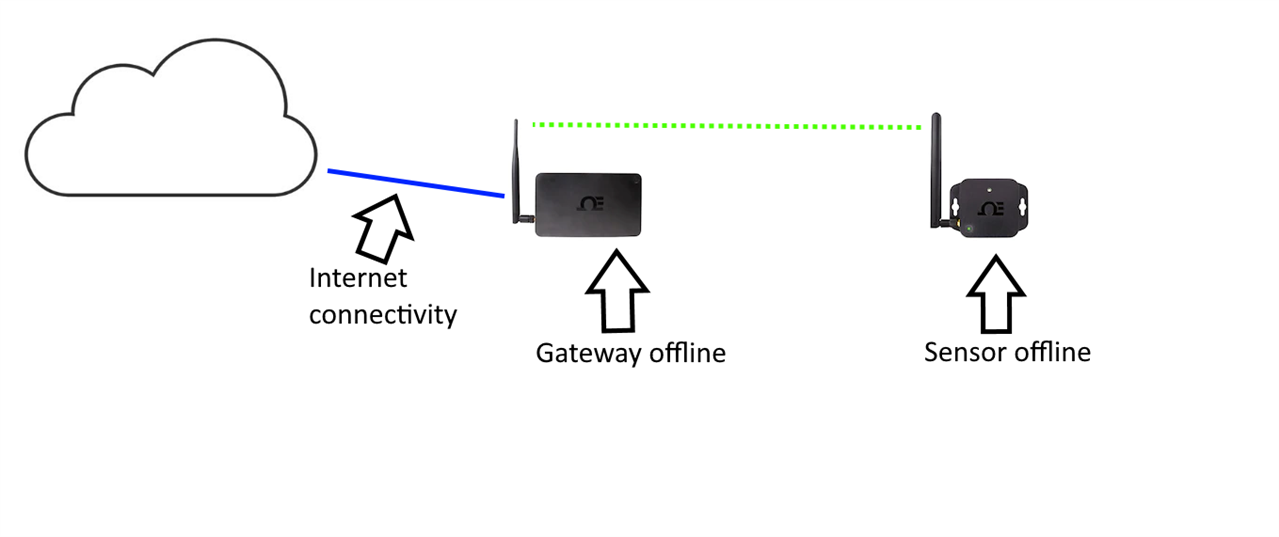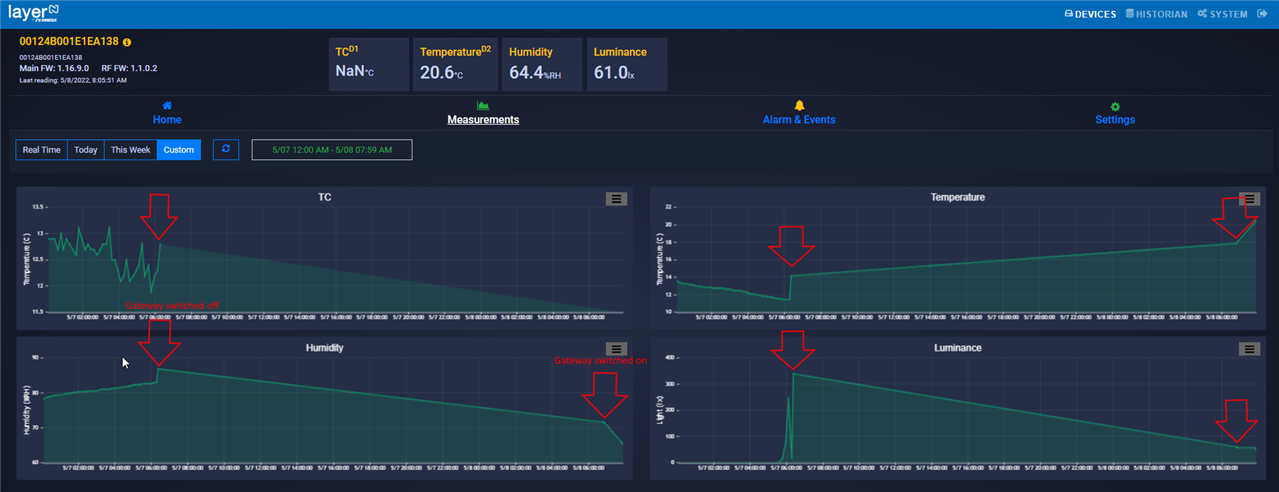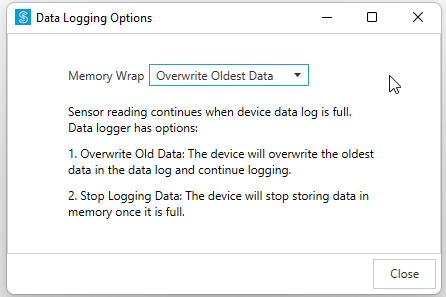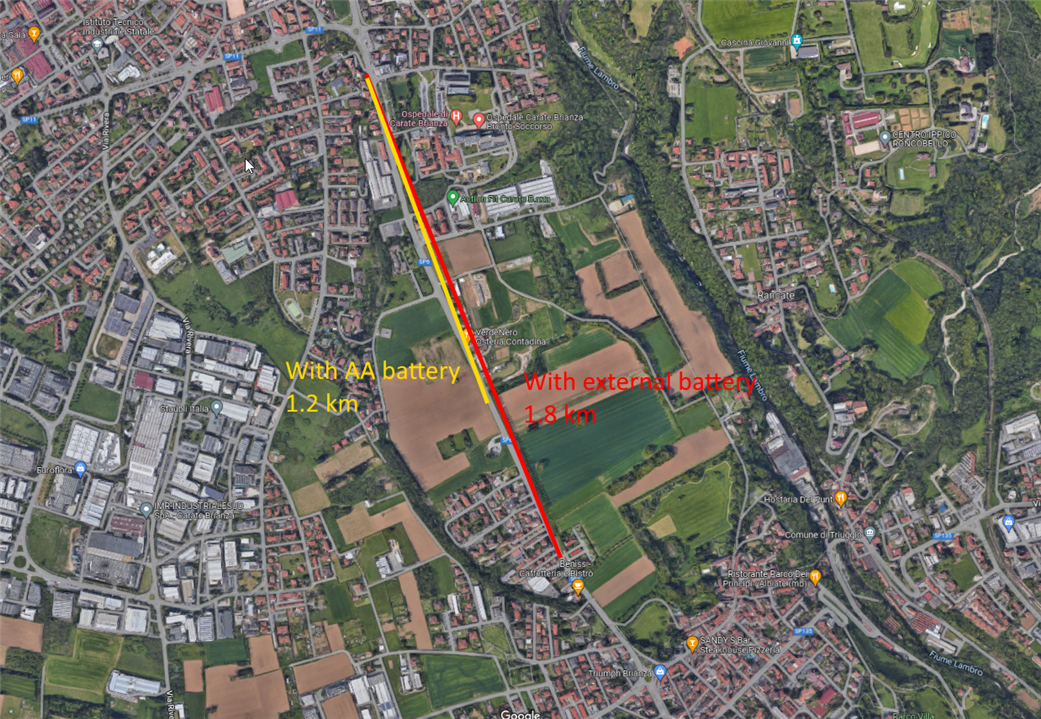This is a slightly out-of-topic post where I will review the performances of the Omega Layer N platform.
In an IoT solution, many things can go wrong. The most common are
- Internet connectivity goes down
- Gateway goes down / is switched off
- Sensor goes offline (for example because of low battery or RF interferences)

Let's see what happens when one of components in the system fails temporary.
1. Internet connectivity
What happens when the Omega gateway has no connection to the cloud?
1.1 Omega gateway boots with cable disconnected / router switched off
If the Omega gateway boots and the cable is disconnected or the router is switched off, the Omega gateway will not connect to the cloud even after the network is plugged or the router is switched on. I guess this is because the Omega gateway tries to get a valid IP address from DHCP server at boot, and does not make any further attempt in case of error. The only option to recover from this condition is to power-cycle the Omega gateway
1.2 Lost of internet connectivity
In case of lost of internet connectivity after successful boot process (as reported by the green LED), the gateway can automatically recover connection to the cloud. However, sample are not buffered by the gateway, so all the samples collected while the gateway is not connected to cloud are basically lost

Gateway is reported as offline on the cloud after about 20 minutes. After reconnection, the online condition is reported almost immediately

2. Gateway switched off
If we switch off the Omega gateway, does the Smart Sensor store data until the connection with the gateway is back online? Unfortunately the answer is no...

It's not clear to me what is the meaning of the "Data logging options" you can find in the SYNC application

3. Smart Sensor switched off
When the Smart Sensor is switched off, the Omega Cloud N provides a visual feedback that the Smart Sensor is not sending data. An alarm in case no data has been received from the Smart Sensor for an extended period of time would be very useful. Modbus devices status is correctly and promptly reported by the cloud portal
4. Maximum distance
A made an empirical test to measure the maximum distance at which the Smart Sensor and the Omega gateway can communicate. The test procedure was
- stop at a certain position
- wait until the Smart Sensor LED starts blinking. If the LED blink for less than 30 seconds, the Smart Sensor has been able to communicate with the gateway. If the LED blinks for more than 30 seconds, we are out of range
- if Smart Sensor and gateway were able to communicate, move 100 meters away from the gateway and go to step 1
Note that the Smart Sensor and Omega gateway operates at 915 MHz, which is a free frequency in US, but is reserved for GSM communication in Europe. for this reason, results may not be affected by a significant error
4.1 Line of sight
The first test was made in line-of-sight condition. The maximum distance was
- with internal AA battery: 1.2 km
- with external battery: 1.8 km

4.2 With obstacles
The second test was made along a route with some obstacles (trees and houses). The maximum distance was
- with internal AA battery: 400 m
- with external battery: 500 m

5. Nice-to-have features
In my opinion, there are at least two features that would be very useful for the Layer N platform
5.1 Smart Sensor remote configuration
When you have the Smart Sensor installed in a plant, it would be difficult the reach it out to change configuration. Currently, you need to use a USB cable and the SYNC application to change configuration and parameters. It would be very nice to be able to upload a new configuration through the Omega gateway
5.2 Complex alarm definition
Currently, an alarm condition can be defined on a single measure (for example "temperature greater than 50 °C"). Adding the possibility to create a complex condition (for example "temperature greater than 50 °C AND humidity less than 50%") will greatly increase the possibility of the system
Next: Anomaly detection (2) >>
